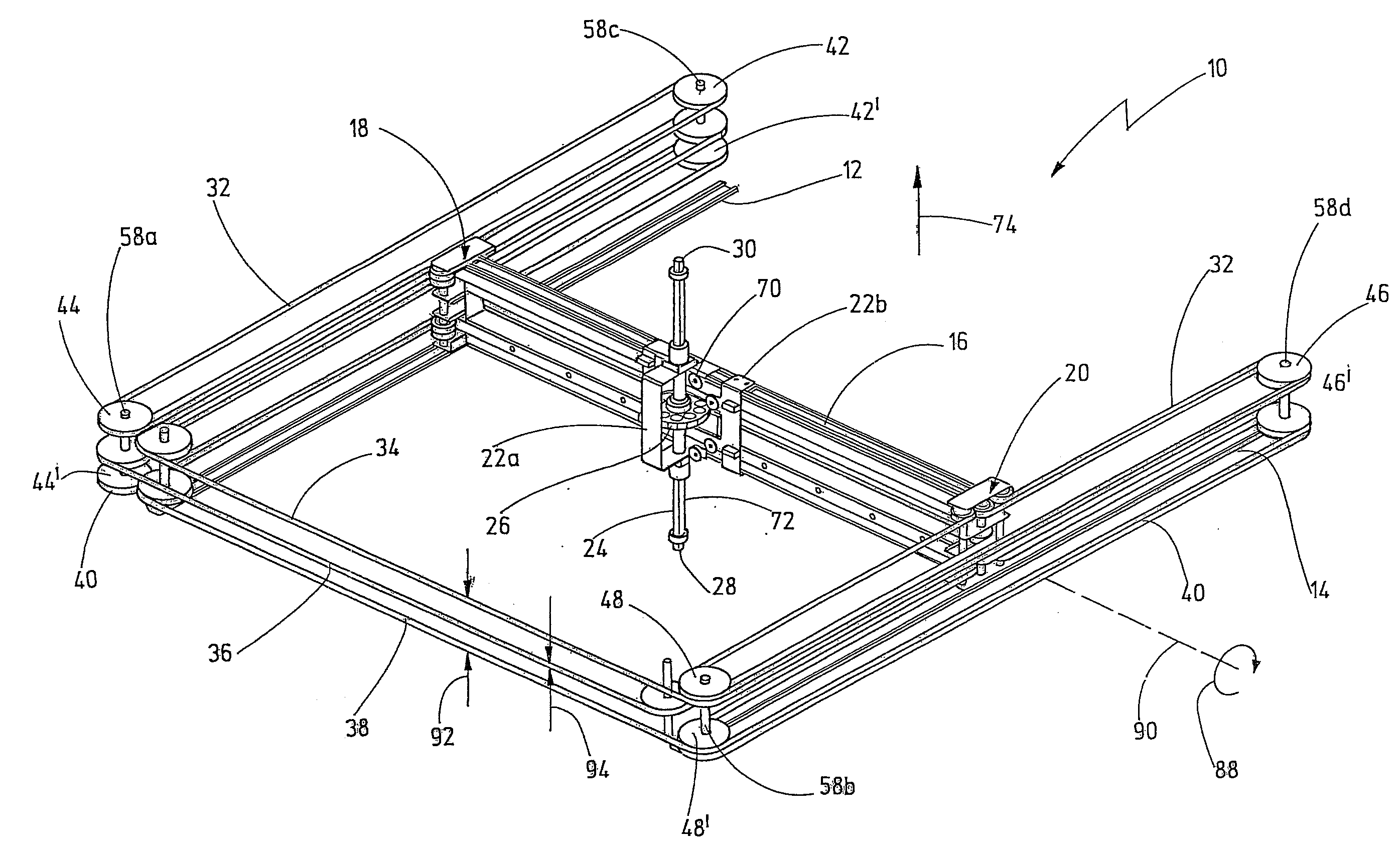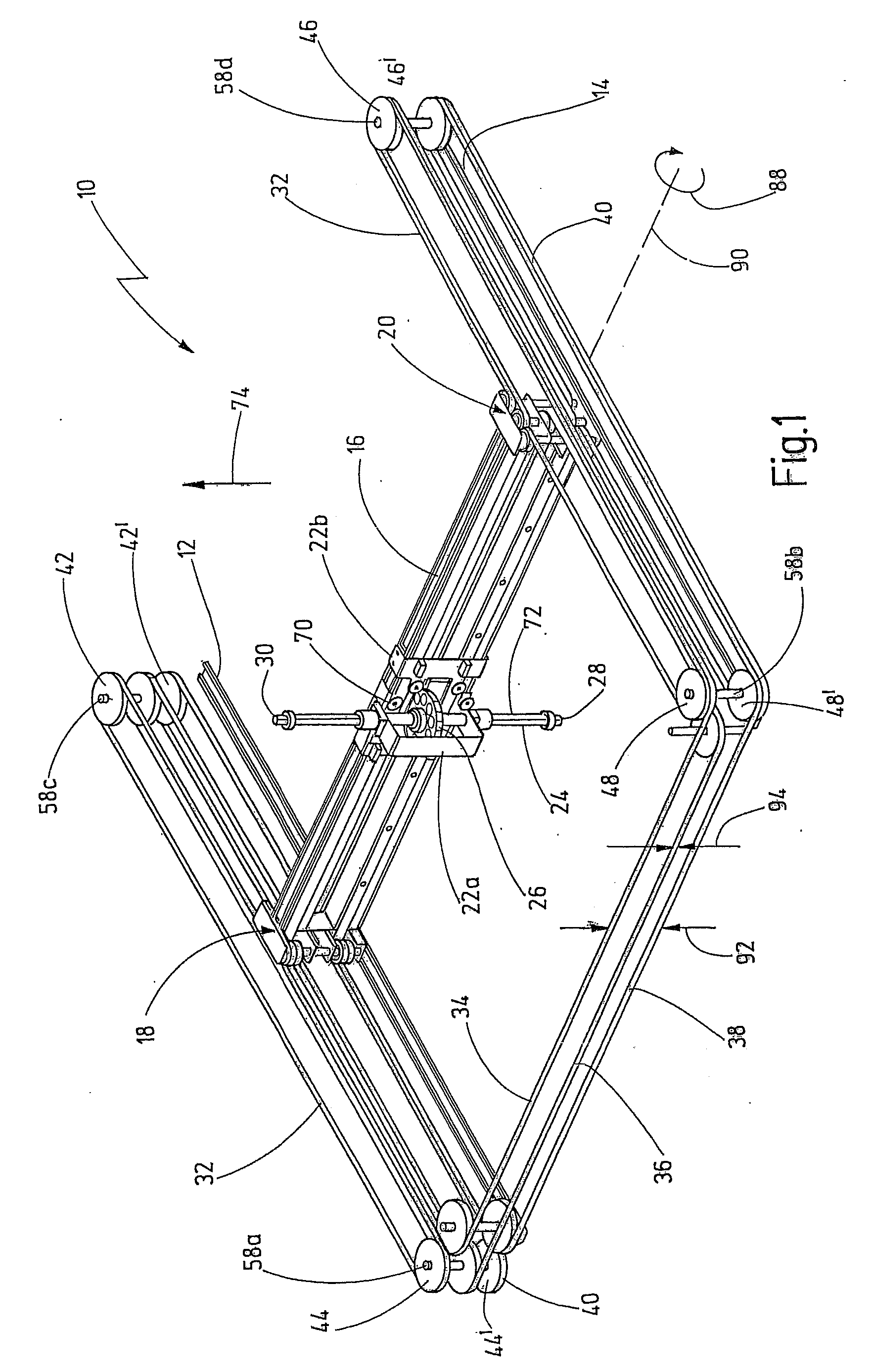Multi-axis robot for high-speed applications
a multi-axis, robot technology, applied in the direction of programmed manipulators, lifting devices, friction gearings, etc., can solve the problems of limited positioning accuracy, limited dynamic behavior, limited dynamic behavior, etc., to increase stability and rigidity, and keep the effect of stability
- Summary
- Abstract
- Description
- Claims
- Application Information
AI Technical Summary
Benefits of technology
Problems solved by technology
Method used
Image
Examples
Embodiment Construction
[0039]In FIG. 1, essential parts of an embodiment of the new robot are designated by reference number 10 in total. For sake of clarity, only parts of the new robot design, which are essential for the present invention, are shown here in detail. It goes without saying that the new robot actually comprises further parts not shown here, such as a general support structure, motor drives, housing parts and / or cover sheets and a controller for controlling the movements described later on. In a typical embodiment, the new robot comprises a substantially rectangular frame supported on four legs, with one leg on each corner of the frame. The frame supports two guide rails 12, 14, pulleys and the motor drives (not shown here in detail). The height of the legs and the length and width of the rectangular support frame might be chosen as appropriate for a desired application.
[0040]The new robot 10 also comprises a crossbar 16 having a first end 18 and a second end 20. The first end is supported ...
PUM
 Login to View More
Login to View More Abstract
Description
Claims
Application Information
 Login to View More
Login to View More - R&D
- Intellectual Property
- Life Sciences
- Materials
- Tech Scout
- Unparalleled Data Quality
- Higher Quality Content
- 60% Fewer Hallucinations
Browse by: Latest US Patents, China's latest patents, Technical Efficacy Thesaurus, Application Domain, Technology Topic, Popular Technical Reports.
© 2025 PatSnap. All rights reserved.Legal|Privacy policy|Modern Slavery Act Transparency Statement|Sitemap|About US| Contact US: help@patsnap.com



